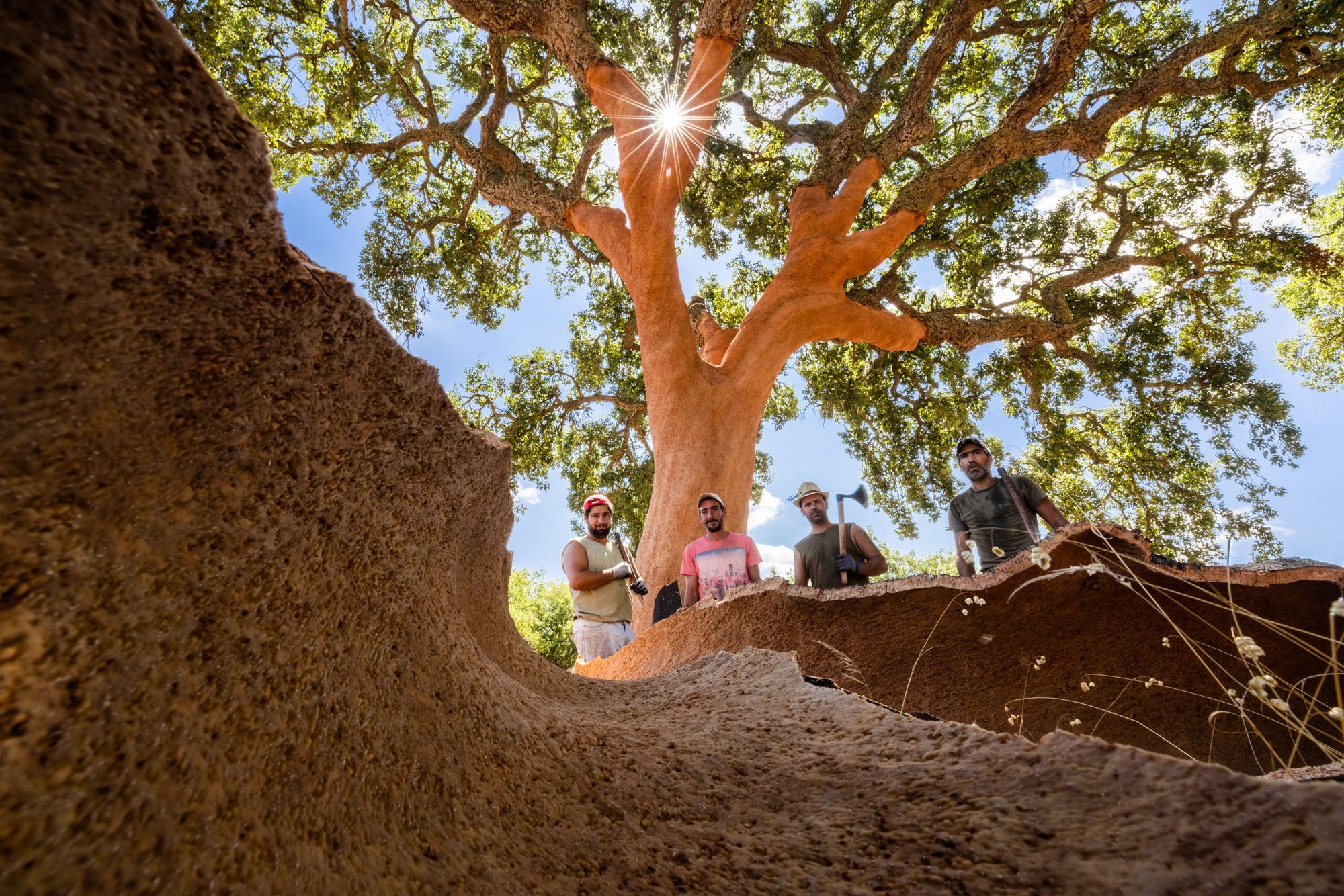
Cork Harvesting
Cork consists of the thick outer bark of the cork oak (Quercus suber). Harvesting cork is the operation of removing bark from the tree during spring or summer. This is the time of year that the tree is engaged in rapid growth. The tender, newly generated cork cells break away from the cambium easily and without damage.
Renewable Harvesting
Harvest difficulties occur if the process is not carried out when the tree is in full growth. As soon as it is evident that the cork is being stripped too early or too late in the season the stripping is brought to a halt, a year's delay in cork extraction is preferred to damage to the tree. The delicate operation of stripping cork has been performed in the same way for decades. Today, cork stripping with a special axe continues to be the quickest and cleanest method available.
The process is temporarily debilitating but the outer bark quickly regenerates and the tree continues to flourish. Studies show that regular harvesting generally improves the trees health and vigor. Stripping cork is a delicate operation that is performed by hand with traditional tools and methods. Despite periodic attempts, there is no mechanized or automated process that can compare to traditional harvesting techniques.
Cork Growing Cycles
Cork is harvested in a steady cycle that promotes healthy growth to the tree over its expected lifespan of over 200 years.
Typically, virgin cork is not removed from saplings until the 25th year, and reproduction cork (the first cycle) may not be extracted for another 9-12 years. Cork suitable for wine stoppers is not harvested until the following 9-12 year cycle, so farmers have invested over 40 years before natural wine corks are produced.
The first harvest produces cork of a very irregular structure. This is called 'virgin cork'.The second harvest brings 'reproduction cork' - a material with a more regular structure, less hard, but still not suitable for cork stoppers. 'Reproduction cork' is usually granulated for use in products such as flooring.
It is from the third and subsequent harvests that the cork with the best properties is obtained - the 'amadia cork' - and from this time, the tree will provide good quality cork for more than 150 years. This is the type of cork that is used on wine stoppers.
Calendar years are painted in the new bark to indicate the last harvest date.


